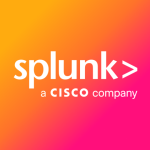What is our primary use case?
We primarily use SevOne for performance management. We're managing an internal corporate network for a large Canadian telco. This includes the data centers, the branch offices, media locations, retail stores, and all of those kinds of connections. We use it obviously to monitor performance, and we also use it to do some performance alarming, and things like that.
We use it extensively to help us communicate with other teams, and with executives so that we can present valuable network data in a pleasing way. It's also accurate, easy to read, and easy to digest for non-network teams, executives, and others.
It was very successful during the pandemic because there was a lot of focus on things like capacity, work from home, and VPN capabilities. It really allowed us to highlight those metrics very easily, and communicate that up to the executives on a daily basis in the early days of the pandemic. It helped to bring that sense of wellbeing that we were not in any danger in terms of system capacity, or things like that. When everybody was sent to work from home, a lot of companies tipped over because they weren't prepared for it, but we didn't have that problem.
SevOne was initially installed on a VM on my network, and then another network within the organization implemented it a couple of years later. As the value was identified and other parts of the organization began consuming it, other networks began implementing it.
How has it helped my organization?
We don't use much of the flow data but other than that, the data it collects is very comprehensive. It's as comprehensive as you want it to be. You can glance over the surface, or you can dig really deep. It all depends on how you configure it out of the box, including what you want to look at and what you want to measure.
Having this depth is really important if you want to get ahead of the problems and head them off before they become customer-impacting. One of the things that happened in our organization was when the pandemic hit, a lot of our customers also went to work from home. Consequently, it drove a lot of traffic volume onto our customer-facing networks. Having SevOne in place prior to that identified a lot of critical choke points that weren't necessarily identified by other traditional monitoring techniques. Other vendors weren't picking them up.
I am not responsible for the customer-facing networks but I know that when we installed SevOne and got it working on some of them, it identified a lot of choke points, and it led us to fix a lot of capacity issues before the pandemic hit. This allowed us to continue to do business in a big BAU fashion as opposed to reacting to a crisis. We were ready for it because, in part, SevOne helped us to find those problems before they became critical. When people went home to work, and all that traffic volume hit our network, we had already rectified the problems.
SevOne's collection abilities cover multiple vendor's equipment, which absolutely is important to us. On my network specifically, we have a vast number of different platforms, more so than most. That's probably reflective of our corporate network, so things become somewhat less standard over time. As a result, SevOne's ability to work with just about any vendor's equipment was definitely valuable for us. The other networks in the organization are a bit more uniform but ours had a lot of different platforms, different kinds of load balancers, different kinds of switches, and there are many different kinds of firewalls. There is no question that this flexibility and compatibility were important.
SevOne can certainly bring together its analytics, reports, and workflows in a single dashboard. For example, the Data Insight overlay is great, and it comes with a lot of built-in dashboards and reports that have that analysis already included. You can take something like that and you can edit it to repurpose it to your needs, or you can use it as an app to build something for yourself. It also drills down really nicely. You start at a general level and then you can drill down to the specifics. You can start with a group, you can drill down to a device, you can get down to an interface, and so on. It's a good tool in that sense because you can look at it with as much detail as you like.
It's pretty easy to use. It's intuitive and menu-driven. It's got the familiar menu across the top as well, that you can tab through. If you know how to use a mouse and a keyboard, you're not going to be lost. But again, with a bit of training and a bit of insight from the developers of the platform, it can really unleash a lot of new ideas and new abilities, but right out of the box, it's pretty easy to use and pretty easy to figure out.
Using SevOne has enabled us to detect network performance issues faster, and before they impact end-users. You can just look at the capacity, and the ability to identify those interfaces that are being over-utilized, over time. Whether you're looking at the last weekend or the last week, or the last month, finding over-utilized links is important. It allows you to either offload that traffic somewhere else or augment that capacity. Importantly, SevOne allows you to get ahead of that. You can anticipate reaching a capacity issue in advance of it impacting your customers.
Another thing to consider is that we have a very large WAN. Canada is a big country, so my network end-to-end is from coast to coast. With such a large network, having real-time information on those links and how they're being utilized, or whether they are up or down, allows us to find and address issues before they become serious problems. You know, if you have two links and one's a primary and one's a backup, and your backup goes down, SevOne helps you understand that there is a gap and that you can get that addressed before the primary fails and you find yourself in an outage situation.
These are the ways that we use it on a daily basis. I am in operations but I know that in our engineering teams, they do the capacity planning and the network planning, so they use it too. You can easily set up a threshold, as well, to alert you when certain links get over-utilized or become highly utilized. Again, you can get ahead of the impacts and ahead of the customer complaints.
In 2020, we went for 11 months on my network without a major incident. We didn't have even one P1 or P2 incident, which is something that we'd never done before, and I credit SevOne with that success. A lot of the issues that we found and fixed with SevOne, prior to going into the pandemic mode of working, may have caused us problems. Our ability to detect and address issues ahead of time, which included monitoring, capacity planning, reviewing those numbers regularly, and paying attention to the alerts of critical links when the pressure increased in terms of capacity, allowed us to stay ahead instead of being purely reactive. It's been a godsend and has brought us 11 months of stability, the likes of which I'd never seen before in 15 years with the company.
In terms of speed, SevOne makes it so that we're faster than the NOC. As a company, we're supposed to rely on the NOC to find these faults, get the alarms, and respond. That's how it works with the other networks in the company, generally speaking. But with us, because we're so deeply integrated with SevOne, we tend to know these things immediately, or within five minutes of something happening on the network because of our chosen five-minute interval.
The bottom line is that it's five minutes or less before the operations group is alerted to a critical situation on the network. Whether it is a hardware fault or something else, we know the issue and the impact of it almost immediately. We find ourselves informing the NOC, "By the way, this happened and you guys should get organized because there's something coming." This means that as an operations manager, I'm quicker on the draw than the NOC, which puts me ahead of most networks.
What is most valuable?
We find that the reporting is particularly valuable in terms of not only communicating with our peer teams but also with the executives. This is an excellent feature that we didn't have before.
The reporting and workflows absolutely help us to understand what is normal and what is abnormal in our network. Out of the box, it's immediately going to highlight things that you didn't know were there. For example, we have a large retail fleet of stores, and they have a network connection, but they also have a backup LTE connection. This means that if their landline fails, they switch over to a wireless network, and continue to work that way.
Before SevOne, we were largely blind to when those switch-overs took place. But with SevOne, there's a report that comes right out of the box called The Top End. Which, if every morning you run it, it's going to tell you where your top utilized points are. For me, it was interfaces. Having it pointing out the top-utilized interfaces quickly allowed me to find those stores that had switched over to LTE because the bandwidth used on an LTE connection is many times higher, percentage-wise, than what you're going to see on a landline.
If you're looking at something and all of a sudden there is a store that's at 1,000% capacity, it is pretty obvious that it has switched over to LTE. At that point, you could address that operationally. But prior to that, you might not know, and there could be stores running on LTE. Then if that LTE failed, they would be dead in the water instead of it switching over to a backup. Ideally, the primary will be fixed while it's running on the backup. However, if you don't know it's broken, you can't react to it.
The out of the box reports have helped speed up time to value for us. As soon as you open the box, you're going to get insights into your network, just based on the content that is going to slap you in the face. In our case, with the LTEs, you knew immediately what was happening by using the Data Insight. This system comes with a lot of canned reports and dashboards that are already built-in, and all you have to do is plug your data into it. It's going to tell you a lot.
We're using one for building dashboards for other parts of the business. The organization has a retail business and a big media business. The media business includes radio stations, television stations, and other sites like that, which are not necessarily offices, and not necessarily data centers. They run on the corporate network, but they're a separate part of the business per se. So, being able to just take an out of the box report, or an out of the box dashboard, and plug the retail hosts into it, or the retail data into it, allowed us to spin-off a separate dashboard that the retail support center can use in their own monitoring of their business.
The retail SevOne Data Insight dashboard allows them to do their own monitoring. I am the operation's manager, so I'm the one who's responding to the alerts, but it keeps them in the loop. It gives them that insight, and that ability to look around and see things for themselves, rather than always having to engage the network team just to ask a question.
Now that we have done that for retail, we're going to do the same things for other parts of the organization. They will be able to see for themselves that the Data Insight is amazing, and it comes with so many different canned reports that you can just plug a device group in, or an object group in, or even a single device, depending on how you have things organized. From there, it will give you a professional-looking, informative, and usable out-of-the-box report that you could look at immediately with a minimum configuration of your instance and immediately gain those crucial insights as an operations manager.
We have also made use of the ability to customize reports. When we started using SevOne only, the NMS, we had to build a lot of that ourselves. What we create is reusable so if I build a report, I can share it with colleagues and they can avail themselves of it. But, you have to create that workflow within your team. Data Insight sort of fixes that, but the important part is that we created a lot of our own custom reports and we still do.
Ultimately, I'd like to get to a place where we are the report creators, in operations. That way, people would come to us with requirements and we would build their reports. This would allow for a bit more control in terms of who's doing what and how things are set up in SevOne. There's a lot of value in that because you can build it for your customer, which I think is the greatest advantage.
Every customer has a different requirement. Whether you're talking to an executive, another technical team, or to an engineering group, they're all looking for a different insight from the data. Having those custom reports and the ability to build one from scratch, depending on who your customer is, and who your audience is, and what they're looking for, has made things a lot easier operationally. I can set up a report that goes to a team every morning so that they can see what the last 24 hours look like from a network performance standpoint. This way, if they're having some kind of problem with their application, they can see with their own eyes that there have been no changes to the network side.
The presentment might be a report that comes in a PDF format or a dashboard that we've built for them. On a dashboard, they can choose to look at data in real-time or go back a year, for example. It depends on how it has been set up. In any case, the offering of SevOne plus Data Insight is a huge advantage in that sense. It means that you can really provide the data that people want in a way that they can understand and consume. It can be tailored to that audience, which will vary between entities such as executives and technical teams.
The ease of building custom reports depends on your background. If you have any kind of an IT background and you use these kinds of tools, it's pretty straightforward. We've had some training on SevOne, but we were also using it prior to training. So, it's intuitive in that sense, if you understand and have used these kinds of tools in the past.
Also, if you have any kind of GUI experience, it's pretty straightforward. It's got the menus across the top and you can drill down to the different applications, or use cases. We found it pretty insightful, but that said, the official training that you can get from SevOne will definitely enhance your ability to do that stuff. They bring a lot of insight when they show you what you can do. It's pretty simple to do the basics, to get something done with it. But the training does obviously enhance that ability.
Essentially, you will get better with the training but you can do it without.
The ability to close alarming gaps in real-time is helpful because when you're running a big network, you sometimes don't know that you have an alarming gap until you have a fall, and that's how you find these things. SevOne allowed us to quickly, in real-time almost, close those alarming gaps because we run the SevOne instance ourselves in a hands-on fashion. As such, we can quickly set up new traps, or new alarming on interfaces where it wasn't before, in order to capture data that we weren't necessarily capturing before. We found that really useful, and as an operations team, it allowed us to take our fate into our own hands. We now have the ability to fix things in real-time ourselves, in terms of alarming and closing those kinds of gaps.
The system provides us with continuous network analytics, and we have it set in five-minute increments that go back for one year. The comprehensiveness of the analytics makes our operations easier. For instance, it frees us up in so far as it keeps other teams out of our hair because we can quickly provide them with the data they need. When issues arise, the team with the best data tends to win the standoff, and SevOne can really arm you well.
For example, when teams are saying that there are network issues, you can quickly show that there are not. It is like the Mean Time to Innocence concept, but it also gives you confidence in your network because you can see the performance statistics and the Delta change over time with your own eyes. It's a great little tool.
The completeness of the view of network performance is as complete as you make it. Of course, there are limitations based on licensing. In the beginning, we had to pick and choose where we spent those licenses. We have since solved that problem by purchasing more.
What needs improvement?
The reporting of NMS is good, but it could be better. The challenges and deficiencies in the reporting are fixed with the Data Insight overlay. Generally speaking, the NMS reporting is excellent and it's fairly easy to use, but it can get complex as you get deeper into it.
For how long have I used the solution?
We have been using SevOne for approximately four years.
What do I think about the stability of the solution?
The stability is rock-solid. In the past four years, it has been great, and I can't think of any stability problems. It has never been unavailable. We have a cold standby in another data center and we have never had to use it.
What do I think about the scalability of the solution?
This product is eminently scalable. It is a matter of compute resources and licenses.
We have between 25 and 30 people who use SevOne on the front end. Those are the other operations teams and their engineering counterparts.
I am in the process of publishing some dashboards for some other parts of the organization, such as the retail support center and the media teams, so our usage is going to expand. These are not going to be power users but rather, they are going to be limited to a specific dashboard and a specific set of elements, as opposed to being able to look at the entire network.
Counting those people, that is going to be an extra 20 users. Then, when the NOC gets integrated, we will probably be up to more than 50 users.
It is slowly but surely being implemented on each network in the company, and becoming the performance front end for each of these networks. We are a cell phone provider, we are a cell service provider, we are a cable television provider, and we are an internet provider. As such, we have many different customer-facing networks nationwide, and all of our networks except maybe the one used for radio broadcasting will end up using it. Through this, the user base is expanding.
The main reasons for the expansion are that it is so intuitive and accessible, and I found it just takes the pressure off me as an operations manager to check on these things for people when they can check for themselves, and see in real-time that the network is fine.
How are customer service and support?
We work very closely with SevOne. We have a customer success director that we meet with biweekly, to make sure that we're getting what we want out of the deal. They ask us to provide feedback on how things can get better and what they can do better. In my experience, they're very open to that kind of feedback and we've definitely given some.
In terms of the customer success meetings, if there's something that we can't figure out how to do, they help us figure out how to do it if there is a way. They will help us deliver on our requirements if it's, at all, capable within the tool. And if it's not, they go back to the drawing board and they're more than happy to try and make things work the way you want them to.
In addition to the customer success department, we use regular technical support. Often, the customer success department will give us a heads up about something like a code upgrade, or a vulnerability, or something that we need to address. From there, we would engage their regular support in order to get a ticket opened and get that arranged.
Certainly, there's not much daylight between customer support and customer success. There's a lot of coordination there. If we want to raise concerns about a ticket, it's quickly addressed by customer support, or the sales director, or whoever. They are very responsive in that sense.
In terms of technical support as a standalone function, we've been pretty happy with the support we've gotten. So far, so good. There have been a couple of things that we've raised that they've never been able to get to the bottom of, but it's certainly not a showstopper. Overall, we've been impressed.
We've never had a dud or anything like that, where we got somebody that wasn't able to deliver on our requirements. In situations where we've asked for more than the helpdesk, or the regular support can deliver, the customer success teams have gotten us in touch with the people in SevOne who have the knowledge that we sought.
In the beginning, we worked with a guy that really helped us understand how to get the most out of SevOne itself. It was an amazing meeting. You meet these certain people in life that just blow your mind about how deeply they understand the way things work in the back end, and this describes the person who initially helped us with the product. Essentially, he was really good at helping us understand the value we could get out of SevOne, out of the box.
Then, we had another meeting like that a couple of weeks ago, where we were just getting into Data Insight and wanting to get the most out of that. They set up another meeting with a guy who was just an amazing guru of Data Insight, and just working with him for an hour and a half on a call and seeing some ideas, and what could be done, and how to get from A to B, was really valuable.
Which solution did I use previously and why did I switch?
We did not have a similar solution in place prior to SevOne, although we did have some imperfect spotty solutions that covered certain portions of our network. What we had was nothing that was comprehensive like this. We had lots of fault management software, as well as Cisco Prime for Wi-Fi performance, and other such products. In terms of having one end-to-end performance tool, we didn't have it, and I think that's what really opened our eyes.
Fault management and performance management are different and what we did have was profoundly manual. As a result, a lot of stuff got missed.
How was the initial setup?
The initial setup is straightforward. If you know what you want, you can just go through the list, and it basically involves ticking boxes or radio buttons to turn on the features you want or turn off the ones that you don't.
I was not part of the initial setup because it wasn't on my network. What happened was we bought SevOne when our network operations team was part of IT. Sometime after that point, we were reorged into the network part of the organization and came under a new director who ran several other operations teams. It was that exposure to SevOne, through our team, to this director, that allowed him to see the value of it immediately. After that, he was pretty quick to say, "How do I get this to my other networks?"
After that, they stood up their own instance and put it into their critical elements. Since that point, they put in the rest of their elements and it's continuing to expand. I don't think they're going to stop there. I think they're bringing in other networks within the organization and the deployment continues.
Importantly, if you don't know what you want then SevOne is going to be there to help you get it to where you want it. They've been excellent. You can call the help desk, the support center, or you can call your customer support person, and they will find a way either to get you the data or to get you in touch with someone who can help you, or they'll call you back and do it themselves.
I don't know how long the initial deployment took, but our second deployment took about two weeks. It was completed by one or two people on our side. They set up a VM, installed the application on it, imported the data, and started configuring it. In total, fewer than five people are enough for deployment.
The maintenance requirements are pretty low. We have to do upgrades, but it doesn't take anyone as much as a day to complete them. It's not very labor-intensive in terms of support and over the past two years, we've needed to engage support only two or three times to assist with upgrades. Overall, it is not a product with heavy manual maintenance.
What about the implementation team?
I did not set it up initially. We had another manager that brought it in at the time, and he'd used it at another company in Canada, which was a bank that he had worked at. He knew exactly what he wanted out of the box.
He deployed it, set it up, and only then did he turn it over to us.
The setup process is simple, straightforward, and obvious enough that you really don't need a third-party integrator. We're moving on right now to integrate it with Netcool and other solutions that our NOC is using. For alarming, they use Netcool.
The other networks have already done this and they're ahead of us, but we're in the process of integrating it now, and it's not hard. The hardest part is getting the NOC onboard and configuring their side, as opposed to SevOne. With SevOne, it's as simple as pointing it toward the new tool and it starts sending traps there.
What was our ROI?
With respect to ROI, that 11 month period without a P1 or a P2 incident was the best return on investment I have seen as an operations manager. One does not make money with this product, but in terms of savings, you are not addressing P1s in the middle of the night because you saw that coming thanks to the performance data.
There is also time saved in terms of engaging with other teams. You can provide your data right upfront and data is often unassailable. This means that when a team comes to you saying, "Oh, your network is not performing.", you can pretty quickly put data in front of them either real-time on a screen, or in a PDF, or in any way that you want to deliver it and show them the data that says, "No, the network is performing. So, whatever your problem is, it is not here."
What's my experience with pricing, setup cost, and licensing?
Although I don't have exact details in terms of cost, my experience has been that SevOne is willing to make a deal with the customer. They are certainly not pricing themselves out of the market. There is lots of room for negotiation in terms of pricing, in terms of components, and things like that.
Which other solutions did I evaluate?
We have not evaluated other options. We've just been leaning on this, heavily.
What other advice do I have?
Overall, I'm pretty happy with this product and how it's used day-to-day.
SevOne is a product that can integrate network performance management across ITSM and business decision-making tools, although that is not something that we have implemented. That said, the data that it produces is very insightful for that type of planning. Capacity planning and engineering are examples of that. I'm fairly certain that it will enhance your decision-making, although it may depend on how you want to set that up. Specifically, you might want it to do that automatically with some kind of an API call between SevOne and another tool, or instead, just provide the metrics to feed into that decision-making process.
There is definitely a culture of continuous improvement with SevOne. With every code upgrade, there's a quality of life improvement and there are customer suggestions that get worked into it. As a company, they're definitely open to working with us, as well as others, to make things better and to bring about those customer asks.
The biggest lesson that I have learned from using this product is that whatever I thought I knew about my network, I was wrong. When we turned it on, it immediately highlighted a lot of issues that we did not know about. That goes for my network and it goes for the others as well. It is an eye-opener when you first start seeing the metrics come out of it.
My advice for anybody who is considering SevOne is not to hesitate. You will be amazed by what you learn about your network. You will be amazed by what you thought you knew but isn't true about your network. It will give you a level of confidence in your network to allow you to focus on other things, like making your network better as opposed to constantly fighting a losing battle against the challenges that can sometimes consume an operations team.
Being able to produce the data in a pleasing and understanding way really stops a lot of the burn, or the churn, that happens to operations, where you waste a lot of time chasing things that aren't there. It has really helped us in that sense. It saves a lot of time and a lot of frustration. It allows us to produce the data, and then move on to the next thing.
It also frees up my guys a lot, to search for those problems that they can find and identify ahead of time, and then fix. It gets you out of that reactive mode as an operations manager, where you're constantly reacting to incidents.
Suddenly, you have that time for preventative maintenance, where instead of reacting to incidents, you can actually go out and find these problems using SevOne. You can make use of the performance analytics and see things coming down the pipe before they become impacting and get them fixed. As an operations manager, that's invaluable. You're going to get a lot of value out of it with very little effort on your part and, the more effort you put into it, the more value you get out.
In summary, SevOne solves a lot of problems for me. Not only has it allowed me to see my network in a way that I hadn't seen before in terms of performance, but it allows me to communicate with my peer teams, and my executives get that data constantly. Especially during COVID, it was very helpful. That said, nothing is perfect, and there is always room for improvement.
I would rate this solution a nine out of ten.
Which deployment model are you using for this solution?
On-premises
Disclosure: PeerSpot contacted the reviewer to collect the review and to validate authenticity. The reviewer was referred by the vendor, but the review is not subject to editing or approval by the vendor.















